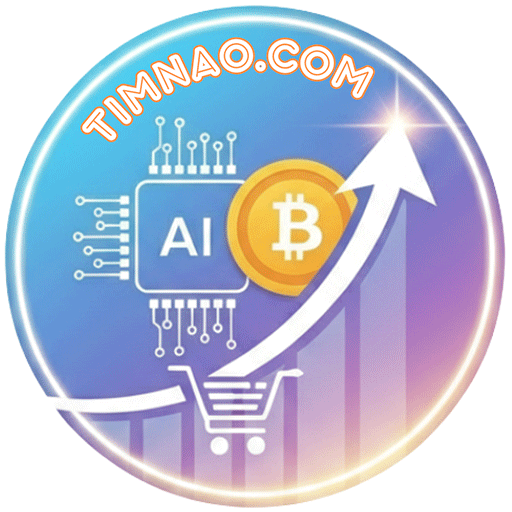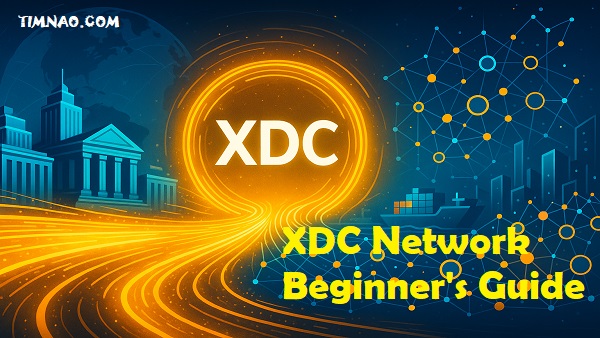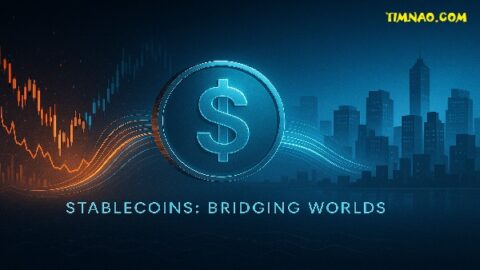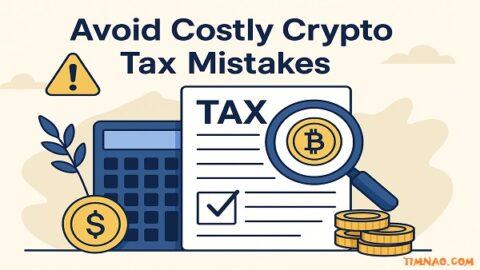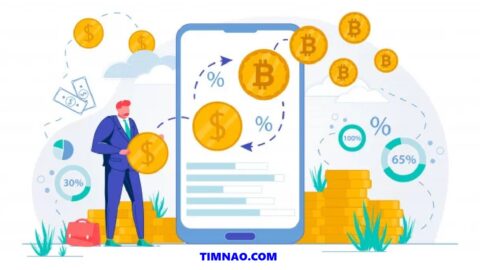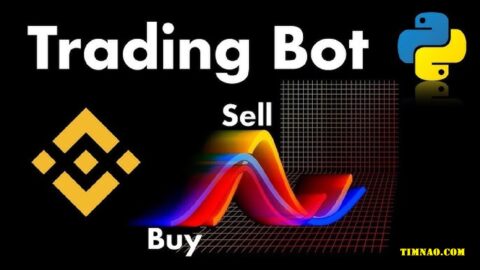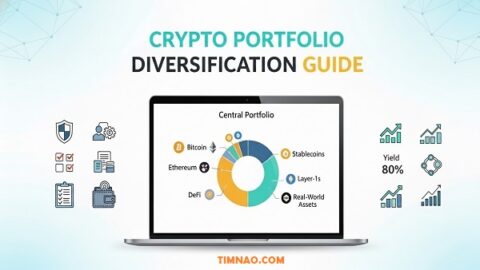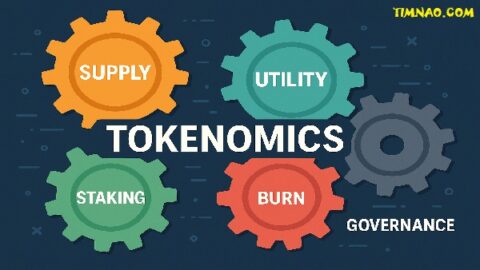🚀 Unlock the Amazing Potential: Your Ultimate XDC Network Beginner’s Guide!
Welcome! If you’ve heard whispers about the XDC Network or perhaps seen “XDC crypto” mentioned and wondered what it’s all about, you’re in the perfect place. This XDC Network beginner’s guide is designed to demystify this exciting technology, breaking down complex concepts into easy-to-understand insights. We’ll explore what is XDC Network, how it operates, and why it’s generating so much buzz, especially in the world of global trade and finance.
The world of cryptocurrency and blockchain can seem intimidating at first, filled with jargon and rapidly evolving tech. But don’t worry! Our aim here is to provide a clear, natural, and flowing explanation, specifically for those new to the subject. We’ll delve into the practical aspects, the innovative solutions XDC offers, and how you can potentially get involved. By the end of this guide, you’ll have a solid understanding of the XDC Network and its place in the digital economy.
Table of Contents
- 🤔 What is XDC Network Anyway? Your First Look at XDC Crypto
- 💡 The Core Idea: Why XDC Crypto Was Created
- 🌐 XDC vs. The Giants: How XDC Differs from Bitcoin and Ethereum
- 🛠️ Under the Hood: Understanding XDC Network’s Technology
- 🌍 Real-World Power: XDC Network in Global Trade Finance and Beyond
- 💰 Your Journey with XDC Crypto: Buying, Storing, and Understanding Tokens
- 🤝 More Than Code: The Vibrant XDC Network Community
- 📈 Looking Ahead: The Future Potential and Challenges for XDC Crypto
- 🚀 Embark on Your XDC Adventure: Key Takeaways and Next Steps
🤔 What is XDC Network Anyway? Your First Look at XDC Crypto
Let’s start with the basics. The XDC Network, also known by its native coin XDC (often referred to as XDC crypto), is a sophisticated blockchain platform designed to bridge the gap between traditional financial systems and the decentralized world of blockchain. Think of it as a next-generation infrastructure built for speed, efficiency, and, crucially, real-world enterprise use. This isn’t just another cryptocurrency; it’s a comprehensive ecosystem.
At its heart, the XDC Network is what’s known as a hybrid blockchain. This means it cleverly combines the best features of public blockchains (like transparency and security available to everyone) with the benefits of private blockchains (like faster speeds, greater control over data, and enhanced privacy for enterprise users). This unique architecture makes it particularly appealing for businesses and institutions that need to adhere to regulatory standards while still leveraging the power of blockchain.
The mission driving the XDC Network is ambitious yet practical: to revolutionize industries like global trade finance, making them more accessible, efficient, and secure. It tackles long-standing problems such as slow transaction times, high costs, and lack of transparency that have plagued these sectors for decades. As you delve deeper into this XDC Network beginner’s guide, you’ll see how its specific features are tailored to meet these challenges head-on.
💡 The Core Idea: Why XDC Crypto Was Created
To truly understand what is XDC Network, it’s essential to grasp the problems it aims to solve. Traditional financial systems, especially in areas like international trade, are often complex, slow, and expensive. They involve numerous intermediaries, reams of paperwork, and processes that haven’t changed much in centuries. This inefficiency creates significant hurdles, particularly for small and medium-sized enterprises (SMEs) that struggle to access global markets.
The founders of the XDC Network envisioned a better way. They saw the potential of blockchain technology to streamline these outdated processes, reduce friction, and foster greater trust. The core idea was to create a blockchain specifically optimized for enterprise needs, capable of handling high transaction volumes with speed and low cost, while also offering robust security and interoperability with existing financial systems. This is a key part of understanding XDC crypto explained.
This focus on utility is what sets XDC apart. While many early blockchain projects were primarily speculative or focused on peer-to-peer payments, XDC was designed from the ground up to provide tangible solutions for businesses. By enabling the tokenization of real-world assets (like invoices or bills of lading) and facilitating smart contracts, the XDC Network empowers enterprises to operate more efficiently and transparently.
🌐 XDC vs. The Giants: How XDC Differs from Bitcoin and Ethereum
For many beginners, the crypto landscape is dominated by names like Bitcoin (BTC) and Ethereum (ETH). So, how does the XDC Network fit in, and what makes XDC crypto different? Understanding these distinctions is crucial for any XDC Network beginner’s guide.
Bitcoin, the pioneer, is often seen as “digital gold”—a store of value and a decentralized payment system. However, its technology (Proof of Work) can be slow for transactions and consumes a significant amount of energy. While revolutionary, Bitcoin isn’t primarily designed for complex enterprise applications or smart contracts on a large scale.
Ethereum took blockchain a step further by introducing robust smart contract functionality, becoming a platform for decentralized applications (DApps). It’s like a “world computer.” However, Ethereum has faced challenges with scalability, leading to periods of high transaction fees (known as “gas fees”) and network congestion. Though it’s evolving with upgrades like Ethereum 2.0, these are ongoing processes.
The XDC Network learned from these predecessors. It utilizes a more energy-efficient and scalable consensus mechanism called Delegated Proof of Stake (XDPoS). This allows for significantly faster transaction speeds (around 2 seconds for finality) and extremely low transaction costs (often fractions of a cent). Furthermore, XDC is EVM (Ethereum Virtual Machine) compatible, meaning developers familiar with Ethereum can easily build or migrate applications to the XDC Network, leveraging its speed and cost advantages. Its hybrid architecture, tailored for enterprise adoption, also offers a distinct advantage for businesses requiring both public transparency and private data control.
🛠️ Under the Hood: Understanding XDC Network’s Technology
Diving a little deeper into this XDC Network beginner’s guide, let’s look at the key technological components that make it tick. Understanding these will help you appreciate what is XDC Network and its capabilities.
The Hybrid Advantage: Public and Private Chains Working Together
As mentioned, XDC’s hybrid architecture is a standout feature. It allows enterprises to create private networks for sensitive data and transactions while still anchoring this information securely to the public XDC blockchain for verification and transparency when needed. This offers the best of both worlds: the speed and privacy of a permissioned network combined with the trust and immutability of a public ledger. This flexibility is a massive draw for businesses navigating complex regulatory environments.
Fast, Efficient, and Green: XinFin Delegated Proof of Stake (XDPoS)
The XDC Network uses a consensus mechanism called XinFin Delegated Proof of Stake (XDPoS). In simpler terms, this is how the network agrees on the validity of transactions and creates new blocks. Unlike Bitcoin’s energy-intensive Proof of Work, XDPoS is highly efficient. XDC token holders can delegate their stake to a limited number of elected “masternodes” (validators). These masternodes are responsible for validating transactions and securing the network. This system allows for:
- High Speed: Transactions are typically confirmed in about 2 seconds.
- Low Cost: Transaction fees are minimal, often less than $0.00001.
- Energy Efficiency: It consumes far less energy than PoW blockchains, making it a more sustainable choice.
- Scalability: The network is designed to handle a large number of transactions per second (over 2000 TPS).
Smart Contracts & DApps: Building the Future on XDC
The XDC Network fully supports smart contracts, which are self-executing contracts with the terms of the agreement1 directly written into code. This enables the development of a wide range of Decentralized Applications (DApps). Because XDC is EVM-compatible, developers can use familiar tools and programming languages like Solidity to build on the network. This has fostered a growing ecosystem of DApps focused on areas like decentralized finance (DeFi), trade finance solutions, and more.
Interoperability: Connecting XDC to the Wider Crypto World
The XDC Network is designed with interoperability in mind. It aims to connect with other blockchains and traditional financial systems, preventing it from becoming an isolated silo. Tools and bridges are being developed to allow for the seamless transfer of assets and data between the XDC Network and other major blockchains. This is crucial for broader adoption and allows users and developers to leverage the strengths of multiple platforms. Recent initiatives and partnerships continue to strengthen these cross-chain capabilities, making the XDC ecosystem more versatile.
🌍 Real-World Power: XDC Network in Global Trade Finance and Beyond
One of the most compelling aspects of the XDC Network, and a core focus of this XDC Network beginner’s guide, is its strong emphasis on solving real-world problems, particularly in global trade finance. This is where XDC crypto explained truly comes to life.
The Global Trade Finance Problem: Why Change is Needed
Global trade is a multi-trillion dollar industry, but the financing that underpins it is often archaic. Traditional trade finance processes involve:
- Extensive Paperwork: Bills of lading, letters of credit, invoices, and compliance documents create mountains of paper.
- Multiple Intermediaries: Banks, insurers, customs agents, and shipping companies all play a role, adding complexity and cost.
- Lack of Transparency: Tracking shipments and verifying documentation can be difficult and slow.
- High Costs and Delays: These inefficiencies lead to significant costs and lengthy settlement times.
- Accessibility Issues: SMEs, particularly in developing economies, often struggle to access affordable trade finance, creating a “trade finance gap” estimated by the Asian Development Bank to be as high as $2.5 trillion in 2022 (an increase from previous estimates).
XDC’s Solution: Tokenization, Digitization, and Efficiency
The XDC Network tackles these issues head-on:
- Tokenization of Assets: Trade finance assets like invoices and bills of lading can be converted into digital tokens on the XDC blockchain. This makes them easier to manage, transfer, and use as collateral, unlocking liquidity.
- Digitization of Processes: Using smart contracts, processes like issuing and verifying letters of credit can be automated, reducing manual effort and the risk of errors.
- Increased Transparency & Security: All transactions and tokenized assets are recorded on an immutable ledger, providing a single source of truth and reducing fraud.
- Reduced Costs & Faster Settlement: By streamlining processes and removing intermediaries, the XDC Network can dramatically reduce costs and speed up settlement times from weeks to days, or even hours.
Real-World Impact: Examples of XDC in Trade Finance
The XDC Network, through platforms like TradeFinex, is actively being used to facilitate trade finance transactions. For instance, it enables businesses to tokenize their invoices, allowing them to get financing more quickly and at better rates. It also helps digitize the cumbersome letter of credit process. Partnerships with organizations like the International Trade and Forfaiting Association (ITFA) and collaborations within initiatives like the Trade Finance Distribution Initiative (TFDi) highlight its growing adoption in this sector. These platforms are demonstrating how blockchain can make trade finance more inclusive and efficient.
Beyond Trade Finance: Other Promising Use Cases for XDC Crypto
While trade finance is a primary focus, the XDC Network’s capabilities extend to other areas:
- Cross-Border Payments and Remittances: Leveraging its speed and low fees, XDC can facilitate faster and cheaper international money transfers.
- Supply Chain Management: Enhanced transparency and traceability for goods as they move through global supply chains.
- Decentralized Finance (DeFi): The XDC ecosystem supports various DeFi applications, offering services like lending, borrowing, and decentralized exchanges (DEXs). Platforms like XSwap are prominent examples of DEXs on XDC.
- Digital Identity: Secure and verifiable digital identity solutions.
- Infrastructure Projects: There’s growing interest in using XDC for tokenizing and financing real-world infrastructure projects, creating new investment opportunities.
The versatility of XDC crypto and its underlying technology opens doors for innovation across numerous industries.
💰 Your Journey with XDC Crypto: Buying, Storing, and Understanding Tokens
Now that you have a better idea of what is XDC Network and its potential, you might be wondering how to get involved. This section of our XDC Network beginner’s guide provides practical steps.
How to Securely Buy XDC Tokens: Choosing an Exchange
XDC tokens can be purchased on various cryptocurrency exchanges. When choosing an exchange, consider factors like:
- Security: Look for exchanges with a strong security track record, two-factor authentication (2FA), and insurance funds.
- Liquidity: Higher liquidity means it’s easier to buy and sell XDC at stable prices.
- Fees: Compare trading fees, deposit fees, and withdrawal fees.
- User Interface: Choose a platform that you find easy to navigate.
- Regulation: Check if the exchange is regulated in your jurisdiction.
Some popular exchanges that list XDC include KuCoin, Bitfinex, Gate.io, HTX (formerly Huobi), and others. Always do your own research before signing up. The process typically involves creating an account, completing identity verification (KYC), depositing funds (either fiat currency or another crypto), and then trading for XDC.
Safe Storage: Picking the Right XDC Wallet for Your Needs
Once you’ve bought XDC, it’s crucial to store it securely. Leaving your tokens on an exchange exposes them to hacking risks. A personal wallet gives you control over your private keys.
- Software Wallets (Hot Wallets): These are applications for your desktop or mobile device. They are convenient for frequent transactions. Popular options supporting XDC include the official XDC Web Wallet, Guarda Wallet, and D’CENT Wallet. Many are also integrating with browser extensions like MetaMask for DApp interactions.
- Hardware Wallets (Cold Wallets): These are physical devices that store your private keys offline, offering the highest level of security. Ledger and Trezor are well-known hardware wallet brands that support XDC. These are recommended for storing larger amounts or for long-term holding.
- Paper Wallets: While less common now, these involve printing out your public and private keys. They are a form of cold storage but require careful handling to prevent loss or damage.
Always back up your wallet’s seed phrase (recovery phrase) securely. Write it down and store it in multiple safe, offline locations. Never share it with anyone.
Understanding XDC Tokenomics: Supply, Utility, and Value
The XDC token is the native utility token of the XDC Network. Its key functions include:
- Transaction Fees: Used to pay for computations and transaction fees on the network.
- Staking: XDC holders can stake their tokens to help secure the network and earn rewards by participating in the XDPoS consensus mechanism, often by running or delegating to masternodes.
- Governance: In some contexts, XDC tokens may play a role in the governance of the network or specific DApps.
- Powering Smart Contracts and DApps: XDC is essential for deploying and interacting with smart contracts and DApps built on the network.
The total supply of XDC is finite, which can contribute to its value as adoption and demand grow. Understanding the utility and the mechanisms that drive demand is important for anyone considering getting involved with XDC crypto explained.
🤝 More Than Code: The Vibrant XDC Network Community
A crucial, yet often overlooked, aspect of any blockchain project is its community. The XDC Network is no exception; its community is a dynamic and growing force that plays a vital role in the ecosystem’s development, adoption, and overall success. This is a key part of our XDC Network beginner’s guide.
The Importance of a Strong Community
In the decentralized world, a community isn’t just a group of users; it’s a collective of developers, investors, enthusiasts, businesses, and advocates who believe in the project’s vision. For the XDC Network, the community contributes by:
- Building and Innovating: Developers create new DApps and tools, expanding the network’s capabilities.
- Providing Feedback: Users offer valuable insights that help improve the network and its applications.
- Raising Awareness: Enthusiasts and advocates spread the word, educate newcomers, and drive broader adoption.
- Securing the Network: Token holders participate in staking and masternode operations, contributing to network security and consensus.
- Fostering Collaboration: The community provides a platform for individuals and organizations to connect, collaborate, and build together.
How You Can Contribute to XDC’s Growth
Even as a beginner, you can actively participate and contribute:
- Learn and Educate: The more you understand about what is XDC Network, the better you can explain its benefits to others. Share reliable information and help debunk myths.
- Participate in Discussions: Join official XDC community channels on platforms like Telegram, Discord, and Reddit. Ask questions, share your thoughts, and learn from others.
- Support DApps: Explore and use applications built on the XDC Network. Provide constructive feedback to developers.
- Consider Staking: If you hold XDC, consider staking your tokens to support network security and earn rewards.
- Advocacy: If you believe in the project, talk about it! Share news and updates on your social media or with your network.
Staying Informed: Following XDC News and Developments
The crypto space evolves rapidly. To stay up-to-date with the XDC Network:
- Official Channels: Regularly check the XDC Foundation website and their official social media profiles (e.g., on X, formerly Twitter).
- Community Forums: Engage in community discussions for grassroots insights.
- Reputable Crypto News Outlets: Follow established crypto news sites that cover XDC developments.
- Track Ecosystem Projects: Keep an eye on projects building on XDC, like Plugin (oracle service), LedgerMail (decentralized email), and various DeFi platforms.
A healthy and active community is a strong indicator of a project’s long-term viability.
📈 Looking Ahead: The Future Potential and Challenges for XDC Crypto
As we near the end of this XDC Network beginner’s guide, it’s important to look at the road ahead. The XDC Network has a compelling vision, but like any innovative technology, it faces both exciting opportunities and significant challenges.
The XDC Roadmap: What’s Next for the Network?
The XDC Foundation and development teams typically outline their future plans through roadmaps. These often include:
- Enhanced Interoperability: Further development of bridges and protocols to improve seamless communication with other blockchains. This includes initiatives like the XDC Network’s integration with the ISO 20022 financial messaging standard, which aims to bridge traditional finance with DeFi.
- Scalability and Performance Upgrades: Continuous improvements to ensure the network can handle growing demand and maintain its speed and low fees.
- Ecosystem Growth: Initiatives to attract more developers, projects, and enterprise partners. This involves grants, hackathons, and educational programs.
- Expansion of Use Cases: Exploring and supporting new applications beyond trade finance, such as institutional DeFi, real-world asset (RWA) tokenization, and sustainability-focused projects.
- Security Enhancements: Ongoing efforts to ensure the network remains secure against emerging threats.
Recent developments often highlight increased institutional interest and the maturation of the XDC ecosystem, with more sophisticated financial products and services being built.
Opportunities for XDC Crypto Explained:
- Growing Enterprise Adoption: As more businesses recognize the benefits of blockchain, XDC’s enterprise-grade features position it well for increased adoption.
- Solving the Trade Finance Gap: The massive and persistent trade finance gap presents a significant opportunity for XDC to provide impactful solutions.
- DeFi Innovation: The EVM compatibility and low transaction costs make XDC an attractive platform for DeFi developers.
- Interoperable Future: As the blockchain world moves towards greater interoperability, XDC’s focus on this area could make it a key player in a connected multi-chain environment.
- Sustainability: Its energy-efficient XDPoS mechanism is an advantage in an increasingly environmentally conscious world.
Challenges Ahead:
- Competition: The blockchain space is highly competitive, with many platforms vying for market share.
- Regulatory Uncertainty: The evolving regulatory landscape for cryptocurrencies globally can create uncertainty and impact adoption. XDC’s focus on compliance and working with institutions is a proactive approach here.
- Market Volatility: Like all cryptocurrencies, XDC is subject to market volatility, which can be a concern for risk-averse enterprises and individual investors.
- Mainstream Adoption Barriers: Educating the broader public and businesses about the benefits of blockchain and overcoming skepticism remains a challenge.
- Technological Evolution: The need to continuously innovate and keep up with rapid technological advancements in the blockchain space.
A balanced understanding of both the potential and the hurdles is key for anyone engaging with the XDC Network.
🚀 Embark on Your XDC Adventure: Key Takeaways and Next Steps
You’ve journeyed through the essentials of the XDC Network, from understanding what is XDC Network to exploring its technology, real-world applications, and future trajectory. This XDC Network beginner’s guide aimed to equip you with foundational knowledge, and now, the adventure truly begins with your own exploration and participation.
Recap: Key Takeaways for Your XDC Journey
- XDC is an Enterprise-Grade Hybrid Blockchain: It combines public and private blockchain features, focusing on real-world utility, especially in trade finance.
- It’s Fast, Cheap, and Green: Thanks to its XDPoS consensus, transactions are quick, fees are minimal, and energy consumption is low.
- EVM Compatibility is a Plus: Developers can easily build or migrate DApps from Ethereum.
- Strong Focus on Solving Real Problems: XDC aims to modernize outdated systems in trade finance and other sectors.
- Community is Key: A vibrant and active community drives innovation and adoption.
Embracing the Learning Curve: Tips for Continued Growth
The world of XDC crypto explained here is just the beginning. To continue your growth:
- Stay Curious: The blockchain space is always evolving. Keep learning, ask questions, and explore new developments.
- Engage with the Community: Participate in discussions, share your insights, and connect with fellow XDC enthusiasts.
- Start Small and Be Practical: If you’re considering investing or using DApps, start with amounts you’re comfortable with and always prioritize security.
- Do Your Own Research (DYOR): While guides like this are helpful, always verify information and make informed decisions based on your own research and understanding.
- Be Patient: Building a revolutionary technology and achieving widespread adoption takes time.
The XDC Network offers a fascinating glimpse into the future of finance and decentralized technology. By taking these first steps to understand it, you’re positioning yourself at the forefront of innovation. Whether you choose to become an investor, a developer, a user, or simply an informed observer, your journey with the XDC Network has the potential to be incredibly rewarding.
Reference video:
